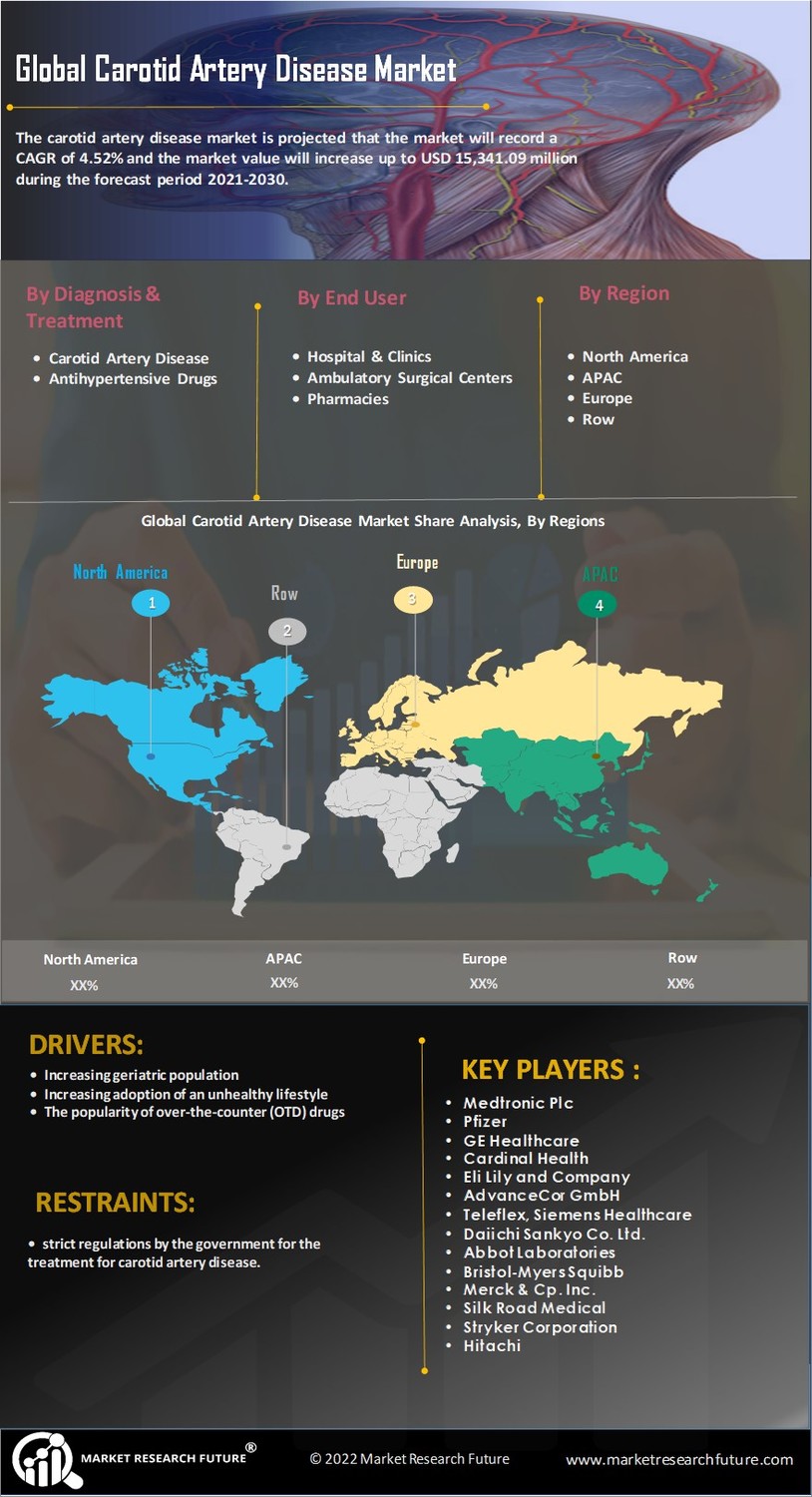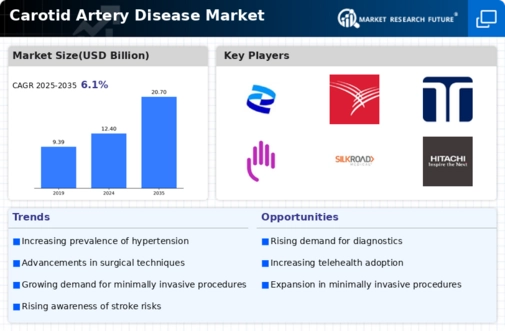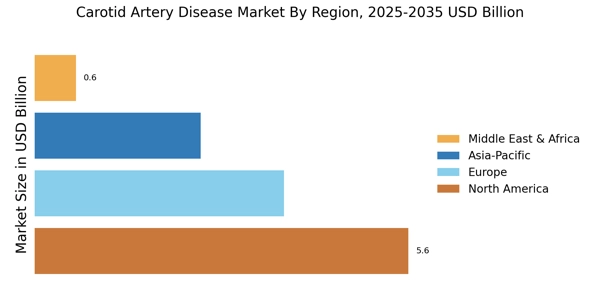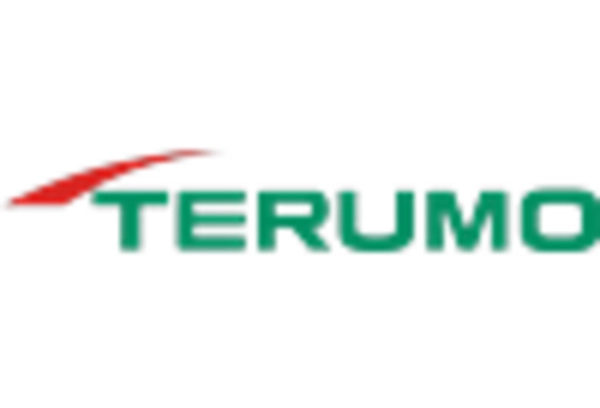Rising Healthcare Expenditure
Rising healthcare expenditure is a significant factor influencing the Carotid Artery Disease Market. As countries allocate more resources to healthcare, there is a corresponding increase in funding for cardiovascular disease management, including carotid artery disease. This trend is evident in various regions, where healthcare budgets are expanding to accommodate advanced diagnostic tools and treatment options. For example, investments in public health initiatives aimed at reducing the incidence of cardiovascular diseases are becoming more prevalent. Consequently, this increased financial commitment is likely to enhance access to care and improve treatment outcomes for patients suffering from carotid artery disease, thereby driving growth in the Carotid Artery Disease Market.
Regulatory Support and Guidelines
Regulatory support and updated clinical guidelines are playing a pivotal role in shaping the Carotid Artery Disease Market. Health authorities are increasingly recognizing the importance of standardized treatment protocols for carotid artery disease, which may enhance patient outcomes and streamline care delivery. Recent guidelines emphasize the need for timely intervention and the use of evidence-based practices in managing carotid artery disease. This regulatory framework is likely to encourage healthcare providers to adopt best practices, thereby improving the quality of care. As a result, the Carotid Artery Disease Market may experience growth driven by the implementation of these guidelines, which could lead to increased utilization of diagnostic and therapeutic services.
Advancements in Medical Technology
Technological advancements in medical devices and treatment methodologies are transforming the Carotid Artery Disease Market. Innovations such as minimally invasive surgical techniques, advanced imaging technologies, and improved stenting procedures are enhancing patient outcomes and expanding treatment options. For instance, the introduction of carotid artery stenting has emerged as a less invasive alternative to traditional carotid endarterectomy, appealing to a broader patient population. Market data suggests that the adoption of these technologies is expected to grow, driven by their effectiveness and reduced recovery times. As healthcare providers increasingly embrace these advancements, the Carotid Artery Disease Market is likely to witness a surge in demand for cutting-edge solutions that improve patient care and streamline treatment processes.
Aging Population and Increased Incidence
The aging population appears to be a primary driver of the Carotid Artery Disease Market. As individuals age, the risk of developing cardiovascular diseases, including carotid artery disease, increases significantly. Data indicates that the prevalence of carotid artery disease is notably higher in older adults, with estimates suggesting that nearly 20% of individuals over the age of 65 may be affected. This demographic shift is likely to lead to a higher demand for diagnostic and therapeutic interventions within the Carotid Artery Disease Market, as healthcare systems adapt to manage the growing burden of this condition. Furthermore, the increasing life expectancy in many regions may exacerbate this trend, necessitating enhanced healthcare resources and innovative treatment options.
Growing Awareness of Cardiovascular Health
Growing awareness of cardiovascular health is emerging as a crucial driver for the Carotid Artery Disease Market. Public health campaigns and educational initiatives are increasingly focusing on the importance of early detection and management of cardiovascular diseases, including carotid artery disease. This heightened awareness is likely to lead to more individuals seeking medical advice and undergoing screening procedures. Data indicates that early intervention can significantly reduce the risk of severe complications associated with carotid artery disease, such as stroke. As awareness continues to rise, the demand for diagnostic services and treatment options within the Carotid Artery Disease Market is expected to increase, fostering a proactive approach to cardiovascular health.


















Leave a Comment